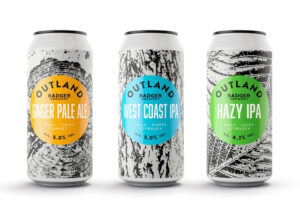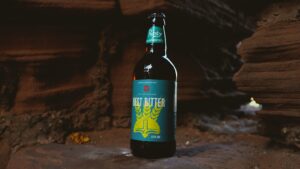Following the launch of LalBrew NovaLager, Lallemand Brewing and Renaissance Bioscience explain how modern yeast breeding methods will surely continue to provide novel, non-GMO yeast strains with commercially important characteristics
Of the four primary brewing ingredients (water, malt, hops, and yeast) it is the yeast that has the most complex and dynamic effect on beer flavour. Not only does yeast produce a range of unique flavour compounds such as esters and phenolics, but it also transforms compounds from the malt and hops.
Yeast transforms malt sugars into alcohol and CO2 and produces enzymes that interact with hop-derived flavour compounds in a process called biotransformation. Some notable beer styles are defined by a particular yeast strain, including Weizens, Abbaye ales, Saisons and Lagers. The lager yeast strains are used to brew the majority of beer consumed worldwide and as such they have been studied extensively.
The history of lager yeast has its roots in 15th century Bavaria when two closely related yeast species, Saccharomyces cerevisiae (ale yeast) and Saccharomyces eubayanus (cold-tolerant yeast), hybridized to form a new natural hybrid species known as S. pastorianus, or better known as lager yeast.
Over the following centuries, this hybrid strain was domesticated through selective repitching of fermentations with the best fermentation performance. As brewing technology advanced over the centuries, the selective pressure led to a major genetic bottleneck that restricted the genetic diversity of lager yeast.
Ultimately this led to the formation of two categories of modern lager yeast, Group I (Saaz) and Group II (Frohberg). Both groups have similar fermentation performance and flavour characteristics and are largely differentiated based on their genomic composition. The Group I strains have a larger proportion of genes from S. eubayanus compared to S. cerevisiae and are therefore slightly more cold-tolerant compared to Group II strains.
The Group II strains have roughly equal genomic contributions from each parental species and have become the dominant workhorse lager strain globally due to their more robust fermentation kinetics, more neutral aroma profile and lower off-aroma production (especially acetaldehyde and diacetyl).
There has been significant innovation in ale strain development over the years resulting in a wide variety of yeast strains that contribute to the diverse range of ale beer styles. On the other hand, innovation of lager strains has been much more limited. Since S. pastorianus strains were domesticated in commercial breweries and do not exist naturally in the environment, selection of novel lager strains is more challenging.
A major breakthrough in lager yeast innovation occurred in 2021 when Renaissance BioScience (Vancouver, Canada) developed a novel breeding methodology to create unique and diverse lager strains.1
Using these methods, Renaissance BioScience selected novel lager strains that contain a greater proportion of the S. cerevisiae subgenome compared to the S. eubayanus subgenome, leading to the formation of a third category of lager strains designated Group III (Renaissance). I
n collaboration with Lallemand Brewing, the first commercial strain from this new Group III category is now available to brewers with the launch of the LalBrew NovaLager™, a modern hybrid lager yeast.
The development of LalBrew NovaLager™ started with the identification of Ale and Lager parental strains with ideal brewing characteristics. The Ale parent is a unique strain selected from nature in Vancouver, BC, that was refined using adaptation and selective breeding to be an ideal “American Ale Yeast Breeder” with high attenuation, unique and subtly fruity aroma, low diacetyl production, and no H2S production.
To select the ideal “Lager Breeder”, a well-known workhorse Group II lager strain was sporulated to form a diploid strain which retained bottom fermentation characteristics and cryotolerance. These Ale and Lager breeders where then hybridized to create LalBrew NovaLager™, which combines the innovative traits from the S. cerevisiae parent with the cold-tolerance and robustness of a traditional Group II lager strain .
Importantly, since LalBrew NovaLager™ was developed using only non-genetically modified techniques such as breeding and adaptive evolution methodologies, it is considered non-GMO.
In essence, this breeding strategy involves isolating the S. eubayanus part of a traditional domesticated lager strain in order to rehybridize this Lager parent with a new Ale parent to produce a novel, modern hybrid lager strain that opens the door to more lager beer style diversity.
With roots in traditional lager history combined with modern laboratory methods, the release of LalBrew NovaLager™ represents the next innovation in lager yeast. Going forward, these modern yeast breeding methods will surely continue to provide novel, non-GMO yeast strains with commercially important characteristics. The future of brewing yeast is exciting!
Key Advantages
- Efficient fermentation and high attenuation to produce crisp, highly attenuated lagers
- Short maturation times due to the inhibition of H2S and low production of diacetyl
- Unique flavour profile consisting of fruity, vibrant and clean aroma profile
- Cryotolerance conferred by the presence of the S. eubayanus subgenome
- Broad temperature tolerance due to an increased S. cerevisiae genomic content
- Lower pitch rates due to a higher viability relative to traditional lager strains.
- Bottom fermentation typical of traditional lager strains.
- Biotransformation of the hop derived compounds in modern beer styles such as Cold IPA or IPL with the expression of beta-glucosidase enzyme.
Authors
Zachari Turgeon, MSc. Renaissance Bioscience Corp. Principal Scientist – Microbial Research and Innovation
Eric Abbott, MSc. Lallemand Brewing
Technical Support Manager
Alexei Titov, Lallemand Brewing
Technical Sales Manager
References
1 Turgeon, Z., Sierocinski, T., Brimacombe, C. A., Jin, Y., Goldhawke, B., Swanson, J. M., Husnik, J. I., & Dahabieh, M. S. (2021). Industrially Applicable De Novo Lager Yeast Hybrids with a Unique Genomic Architecture: Creation and Characterization. Applied and environmental microbiology, 87(3)









